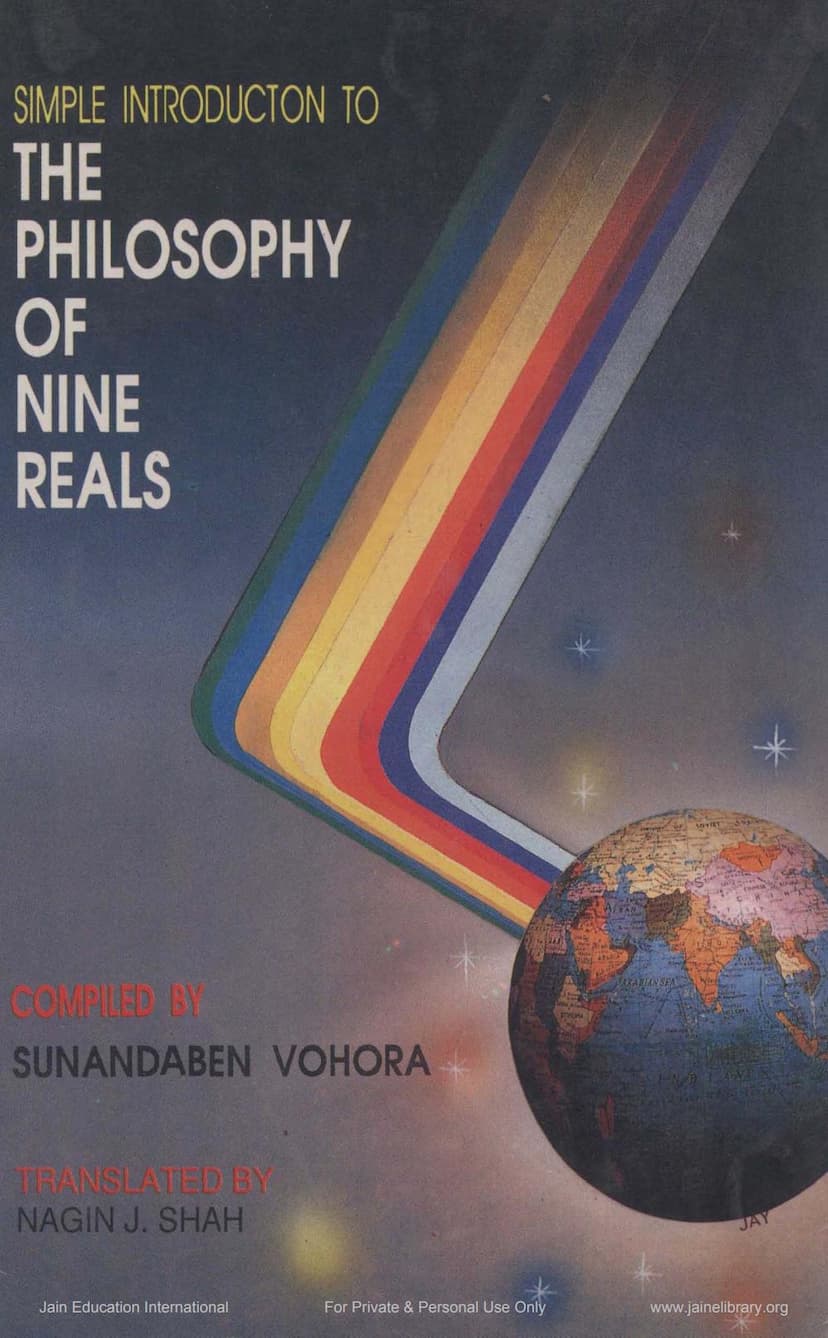Philosophy Of Nine Reals
Added to library: September 2, 2025

Summary
Here's a comprehensive summary of "Philosophy of Nine Reals" by Sunandaben Vohora, based on the provided text:
Overall Purpose and Target Audience:
"Philosophy of Nine Reals" is an introductory text, compiled by Sunandaben Vohora and translated by Nagin J. Shah, aiming to explain the fundamental principles of Jain philosophy to beginners. The book is inspired by the teachings of Acarya Sri Bhadrankarasuri Mahurujaji. The preface emphasizes that the philosophy, while serene, can be challenging, but encourages readers to make an effort to understand it for spiritual realization and the removal of misery. The English translation is of the first part, with a second part intended for more advanced students.
Core Concept: The Nine Reals (Nava Tattva)
The central theme of the book is the explanation of the "Nine Reals" (Nava Tattva), which are presented as an expansion of the two fundamental reals in Jainism: Jiva (Soul) and Ajiva (Non-Soul). The omniscient Lord, according to Jainism, propounded these nine reals to make these fundamental principles understandable.
The Nine Reals are:
- Jiva (Soul): Characterized by sentience, existence, and bliss. It possesses cognitive faculties of knowledge and intuition. Examples include human beings, celestial beings, animals, and birds.
- Ajiva (Non-Soul): Bereft of sentience, incapable of life-forces, and without cognitive faculties. This encompasses various physical substances and concepts like matter, space, time, and principles of motion and rest. Examples include clothes, vessels, and cots.
- Punya (Auspicious Karmic Matter): Karmic particles that cause pleasant experiences. They are attracted and bound by the soul through auspicious internal states. While a means to worldly pleasure, excellent auspicious karma guides one towards religion.
- Papa (Inauspicious Karmic Matter): Karmic particles that cause unpleasant experiences. They are bound by the soul through inauspicious internal states, leading to suffering and transmigration. Evil acts like violence, untruthfulness, theft, etc., cause the acquisition of this karma.
- Asrava (Inflow of Karmic Matter): The doors or causes through which karmic matter enters the soul. These are primarily wrong faith, non-restraint, passions, activity, and negligence. This inflow is identified with auspicious and inauspicious karmic matter.
- Samvara (Stoppage of the Inflow of Karmic Matter): The stopping of karmic inflow, achieved through self-control, disciplined activities (gupti), conquering afflictions (parishaha), cultivation of virtues (dharma), deep reflection (bhavana), and right conduct. This is both external (stopping karmic inflow) and internal (stopping unwholesome states).
- Nirjara (Partial Dissociation of Karmic Matter): The process by which karmic matter, already bound to the soul, is gradually eliminated. This can be involuntary (as karma yields its fruit) or voluntary, achieved through penance. Voluntary Nirjara, driven by knowledge and penance, leads to spiritual purification.
- Bandha (Bondage): The interpenetration of the soul's space-points and karmic matter particles. The soul is bound to karmic matter from beginningless time due to its impure states. Karmic matter is broadly classified into eight types (knowledge-obscuring, intuition-obscuring, deluding, power-obscuring, feeling-producing, body-making, status-determining, and life-span-determining), further categorized as "ghati" (obstructive) and "aghati" (non-obstructive).
- Moksha (Liberation): The total dissociation of karmic matter from the soul, leading to the manifestation of the soul's pure, natural state of infinite bliss and freedom. This is achieved through the combined path of Right Faith, Right Knowledge, and Right Conduct.
Key Themes and Concepts Explained:
- The Nature of the Soul: The book begins by establishing the soul (Jiva) as a sentient being with inherent qualities of existence, sentience, and bliss. It is distinct from the physical body.
- The Worldview: The nine reals present an "undistorted true worldview" where the structure and order of the world are governed by natural principles, not an external agent.
- The Path to Liberation: The core objective of understanding the nine reals is to achieve liberation (Moksha) from the cycle of birth and death. This path involves purifying the intellect and cultivating right faith.
- Discrimination (Vivek): To strengthen faith in the nine reals, three types of discrimination are essential: what should be known (Jiva, Ajiva), what should be attained (Punya, Samvara, Nirjara, Moksha), and what should be abandoned (Papa, Asrava, Bandha).
- Classification of Souls: The text details various ways worldly souls are classified, including by sentience, mobility, sex, life-species (celestial, human, animal, infernal), and the number of sense-organs (one-sensed to five-sensed).
- Life-Forces (Prana): The book explains the ten life-forces that sustain a worldly soul, divided into external (dravya) and internal (bhava) life-forces.
- The Six Substances (Dravya): The world is composed of six eternal substances: Soul, Matter, Medium of Motion, Medium of Rest, Space, and Time. These substances have natural dynamism and govern themselves.
- Nature of Matter (Pudgala): Matter possesses physical qualities like color, taste, smell, and touch, and is perishable.
- Karmic Processes: The book elaborates on the inflow (Asrava), stoppage (Samvara), dissociation (Nirjara), and bondage (Bandha) of karmic matter, explaining how actions and internal states influence these processes.
- Penance (Tapa): Penance is presented as the primary means for voluntary dissociation of karmic matter, with twelve forms (six external and six internal) designed to purify the soul and extinguish desires.
- The Path of Liberation: The culmination of understanding the nine reals is the realization that liberation is the ultimate goal of human life, attainable through the consistent practice of Right Faith, Right Knowledge, and Right Conduct.
In essence, "Philosophy of Nine Reals" provides a foundational understanding of the Jain cosmological and ethical framework, outlining the nature of reality, the soul's journey through bondage and liberation, and the practical steps to achieve spiritual freedom.